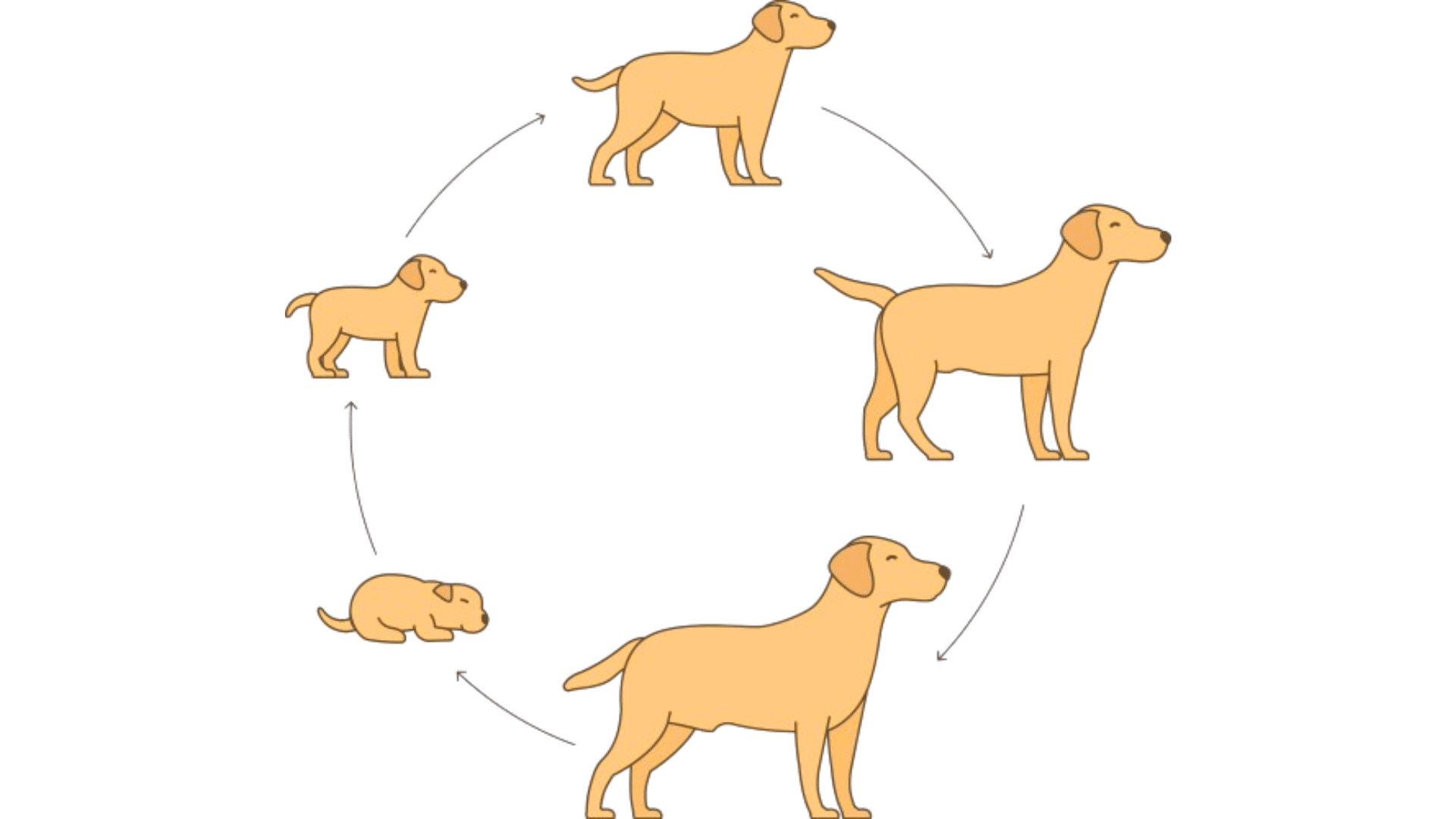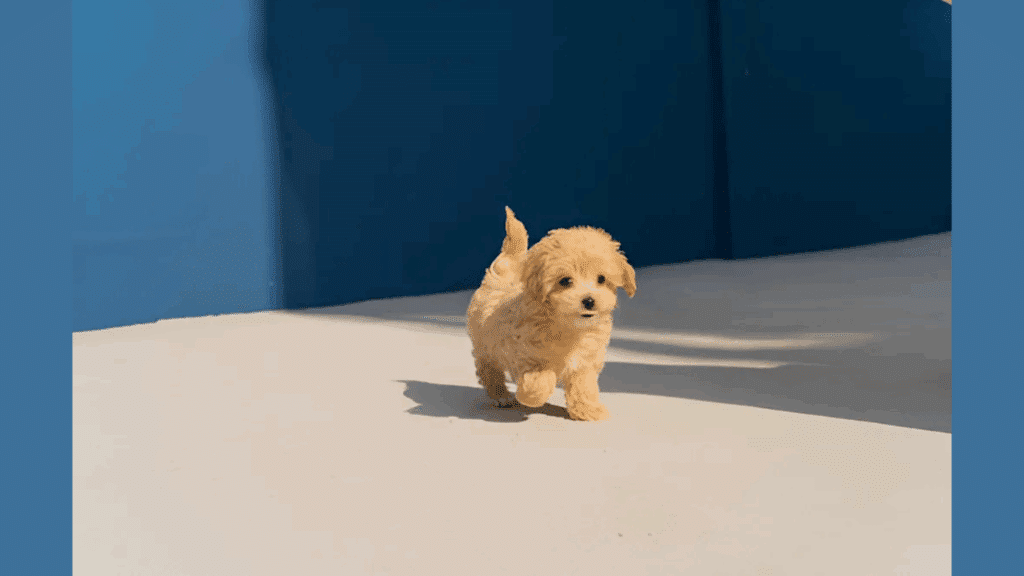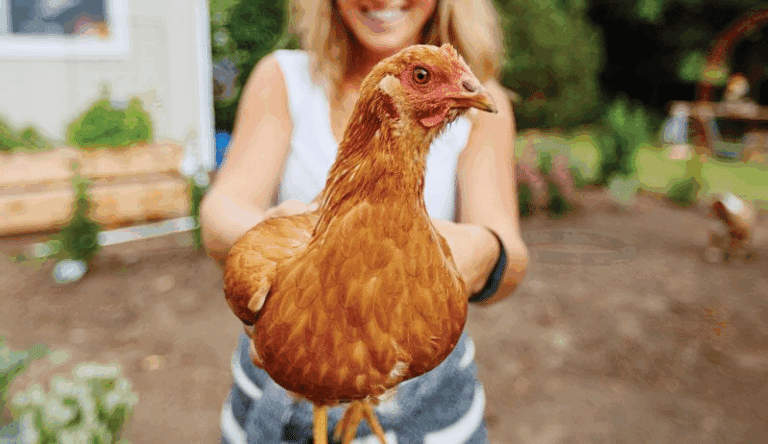Ever wonder why a Great Dane puppy is already bigger than an adult Chihuahua?
If someone owns a dog, they know how confusing canine growth can be. Their tiny puppy suddenly outgrows collars every month. They can’t figure out when their pet will stop growing. It’s really frustrating for dog owners!
Here’s what surprises most people: a dog’s breed doesn’t just decide how big they get. It changes their entire growth schedule. Small dogs stop growing at 8 months. Giant breeds keep growing for almost 2 years.
This blog will show readers exactly how breed affects their dog’s growth. They’ll learn when to expect growth spurts and when their furry friend will finally stop growing.
What is the Life Cycle of a Dog?
The life cycle of a dog has several important stages, just like people. It starts when a dog is born as a puppy.
Puppies are small, need lots of care, and spend their time eating, sleeping, and learning about the world. As dogs grow, they become adults.
Adult dogs are fully grown, more independent, and can have puppies of their own. After several years, dogs become seniors. Senior dogs may move more slowly and need extra care and comfort.
Each stage of a dog’s life needs different food, exercise, and attention. Knowing about the life cycle of a dog helps you care for your pet and keep them healthy and happy at every age.
The Stages of a Dog’s Life Cycle: From Puppyhood to Senior Years

Check out the four key stages of a dog’s life, from playful puppyhood to wise senior years. Learn what to expect and how to care for your dog at every age.
Stage 1: Puppyhood (0–6 months)
Puppies are born blind, deaf, and totally dependent on their mother.
In the first few weeks, they begin to open their eyes and ears, learning about the world around them. Puppies need warmth, their mother’s milk, and gentle care.
As they grow, they start to play, chew, and explore, which helps them learn social skills and develop strong bodies.
This is also the time for early training, like learning to use the bathroom outside and following simple commands.
Stage 2: Adolescence (6 months–2 years)
During adolescence, dogs grow quickly and become more active and curious.
They may test boundaries and need clear rules and patient training. This is when dogs lose their baby teeth and get their adult teeth.
Adolescents have lots of energy and need regular exercise and playtime. Training during this stage helps them become well-behaved adults.
Stage 3: Adulthood (2–7 years)
Adult dogs are fully grown and usually settle into a routine. They need regular walks, balanced meals, and yearly checkups at the vet.
Adult dogs are strong, active, and enjoy playing with their family. They might also have puppies of their own. Keeping them healthy with exercise, good food, and attention is important during these years.
Stage 4: Senior Years (7+ years)
Senior dogs start to slow down and may need extra comfort and care. Their joints can get stiff, and they might not see or hear as well as before.
Older dogs often need softer beds, gentle walks, and special food for seniors. More frequent vet visits help catch health problems early.
Even though they may not play as much, senior dogs still enjoy love and attention from their family.
Knowing about each stage of a dog’s life cycle helps you care for your pet in the best way, making sure they stay healthy, happy, and loved from puppyhood to their senior years.
Scientific Classification of Dog
Ever wonder where your furry friend fits in the animal kingdom? Here’s how science classifies the domestic dog:
- Kingdom: Animalia – They’re animals, just like us (but way cuter).
- Phylum: Chordata – They have a backbone and a nervous system.
- Class: Mammalia – Warm-blooded, furry, and yes, they nurse their young.
- Order: Carnivora – Naturally meat-eaters (though many love a good carrot, too).
- Family: Canidae – This is the dog family, which includes wolves, foxes, and jackals.
- Genus: Canis – Latin for “dog,” this group also includes wolves and coyotes.
- Species: Canis lupus – Technically, dogs are a subspecies of the gray wolf.
- Subspecies: Canis lupus familiaris – That’s your tail-wagging best friend right there!
How do I know if my Puppy has Reached Puberty?

Puberty is when puppies start to grow up and become more like adult dogs. Just like in humans, this is when their bodies begin to change.
Here are some signs your puppy might be going through puberty:
- Physical changes: You may notice your puppy getting bigger fast, growing more fur, or starting to look more like an adult dog.
- Behavior changes: They might test the rules, act more stubborn, or show more energy and excitement than usual.
- Lifting leg or marking: Male puppies may start lifting their leg to pee or marking spots in the house.
- Females go into heat: Female puppies may have their first heat cycle (you may see some swelling or a small amount of bleeding).
Most puppies reach puberty between 6 to 12 months old, but it depends on their breed and size. Smaller dogs tend to mature earlier, while larger breeds may take longer.
Tip: If you notice any of these changes, talk to your vet. They can help you decide if it’s the right time to spay or neuter your dog and how to handle behavior during this stage.
How Dog Breeds and Sizes Affect Life Stages
Dog breeds and sizes play a key role in determining their growth, aging, and lifespan. Smaller dogs mature faster and live longer, while larger dogs grow more slowly but age quicker and have shorter lifespans.
Different Breeds, Different Lifespans
Some dog breeds live longer than others. Small breeds, like Chihuahuas, often live longer than large breeds, like Great Danes.
Growth Rate Changes by Size
Small dogs grow up faster and reach adulthood sooner. Large dogs stay puppies longer and take more time to become adults.
Senior Years Come Sooner for Big Dogs
Large breeds become seniors at a younger age, sometimes as early as 6 or 7 years old. Small breeds might not be seniors until they are 10 or older.
Health Needs Are Not the Same
Big dogs may have more joint problems as they age, while small dogs can have dental issues. Knowing your dog’s breed and size helps you care for them at every stage.
Breed and Size Knowledge Improves Care
Understanding your dog’s breed and size helps you anticipate health needs and provide appropriate care throughout each life stage
The Bottom Line
Understanding your dog’s growth cycle helps you become a better pet owner. Small breeds reach their full size quickly, while large breeds take their time. Each stage brings different needs and challenges.
So what’s next for you and your furry friend? Start tracking your dog’s weight and height monthly and stay updated.


















